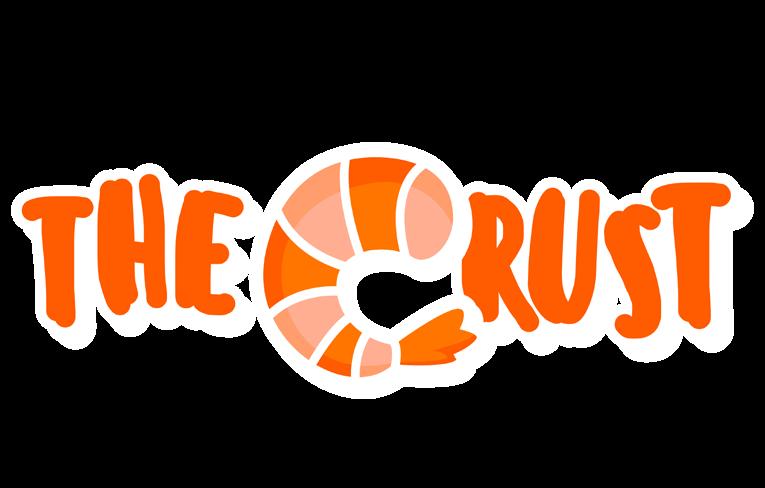




Hello! Thank you for your interest and welcome to the first-ever edition of THE CRUST. In case we are not acquainted yet, we came from an organization called the Petambak Muda Indonesia (PMI), which consists of young shrimp farmers around Indonesia. Our mission is to share information and hopefully attract more people, especial ly the younger generation, to enter the aquaculture industry. From this medium, we hope to deliver bite-sized news that is both interesting and educational to read ers around the world.

We heard a lot of comments on how it is hard to find, or form, an or ganization such as PMI in other coun tries. An organization where young people are so passionate about aqua culture that they organized a group to learn and grow together. Never theless, it is concerning that fewer and fewer younger generations are interested in this or similar industry. They are more inclined to take pres tigious jobs working inside offices in big cities. These “dirty” and “not sexy” jobs are often overlooked, even though the potential profit shouldn’t be underestimated. Thus, this is our way to reach more people around the globe and promote aquaculture life.

Lastly, a shoutout to someone whom I consider a mentor, Dr. Zuridah Merican, editor of the Aqua Culture Asia Pacific magazine. From her, I learned a lot about how to create more engaging events, be a better spokesperson, and other various ways to contribute to the aquaculture industry. Hope that she will keep inspiring more people in many years to come. THE CRUST - RIZKY
One aspect of food production that we cannot overlook is sustainability. In every PMI event, we always include it as one of our main discussion topics in hope of disseminating the idea and creating awareness of the importance of environmental conservation. We find that the concept is received easier by young er audiences because of their familiarity with the topic. From there they can start to incorporate sustainable ideas in their farm design and avoid having to change certain features in the future.
Humans need to consume food; that is undeniably one of our most basic needs. Throughout history, humans had successfully evolved from hunting and gathering to growing our food. Production went up significantly when the world went through what we call the green revolution in the 50’s and 60’s. Food from then became abundant and the world could support a bigger population. However, we are losing production nowadays due to factors like the conversion of farmlands, world conflict, and climate change to name a few. Hence, to ensure global food security, the world will need a blue revolution.
Rizky Darmawan Chief EditorTaking place at the Grand City Con vention & Exhibition, Surabaya, Shrimp Club Indonesia (SCI) held their 5th National Conference. The Na tional Conference which was held for 3 days (23-25/8) was packaged in a series of shrimp exhibition events & a national business meeting, shrimp farmer day, and an aquaculture seminar attended by over 2500 visitors.
Being one of the largest shrimp farming exhibition events this year, the SCI National Conference presented more than 40 exhibitors consisting of
many different companies/shrimp in dustry players; ranging from feed, ge netics, aquatech, as well as nutrition and animal health National Shrimp Production Target

The 5th SCI National Conference was officially opened by the Indonesian Mi nister of Maritime Affairs and Fisheries, Sakti Wahyu Trenggono. In his speech he said, shrimp is one of Indonesia’s leading export fishery products whose export value last year reached USD2.22 billion. Occupying the top position in terms of value and volume compared to other fishery products. Therefore, the govern ment sets the target of national shrimp pro duction to 2 million tons by 2024, most of which is inten ded for the export market.
According to Sakti, the tar get will be more easily
achieved with multi-stakeholder sy nergy. “For this reason, I hope that the SCI National Conference can present innovations or work programs that can support increasing national shrimp production while maintaining environ mental sustainability,” he hoped.
In response to this, the Head of SCI for the 2017-2022 period, Iwan Sutanto, stated the readiness of shrimp farm ers to reach 2 million tons of national shrimp production. However, he ex pects the government to be supportive in terms of providing conducive clus ters/cultivating areas. “We are ready to bridge the gap between input-out put channels. Feed, broodstock, PLs, and all channels are arranged so that smooth-sailing culture can be achieved across the industry. And of course, with government support as well. If every thing is integrated, the goal of elevating average production capacity of around 40 tons per hectare is not far-fetched,” he claimed.
The Director General of KKP Aqua culture, TB Haeru Rahayu also added, SCI is the front line to support govern ment programs, especially to be able to achieve government targets, namely
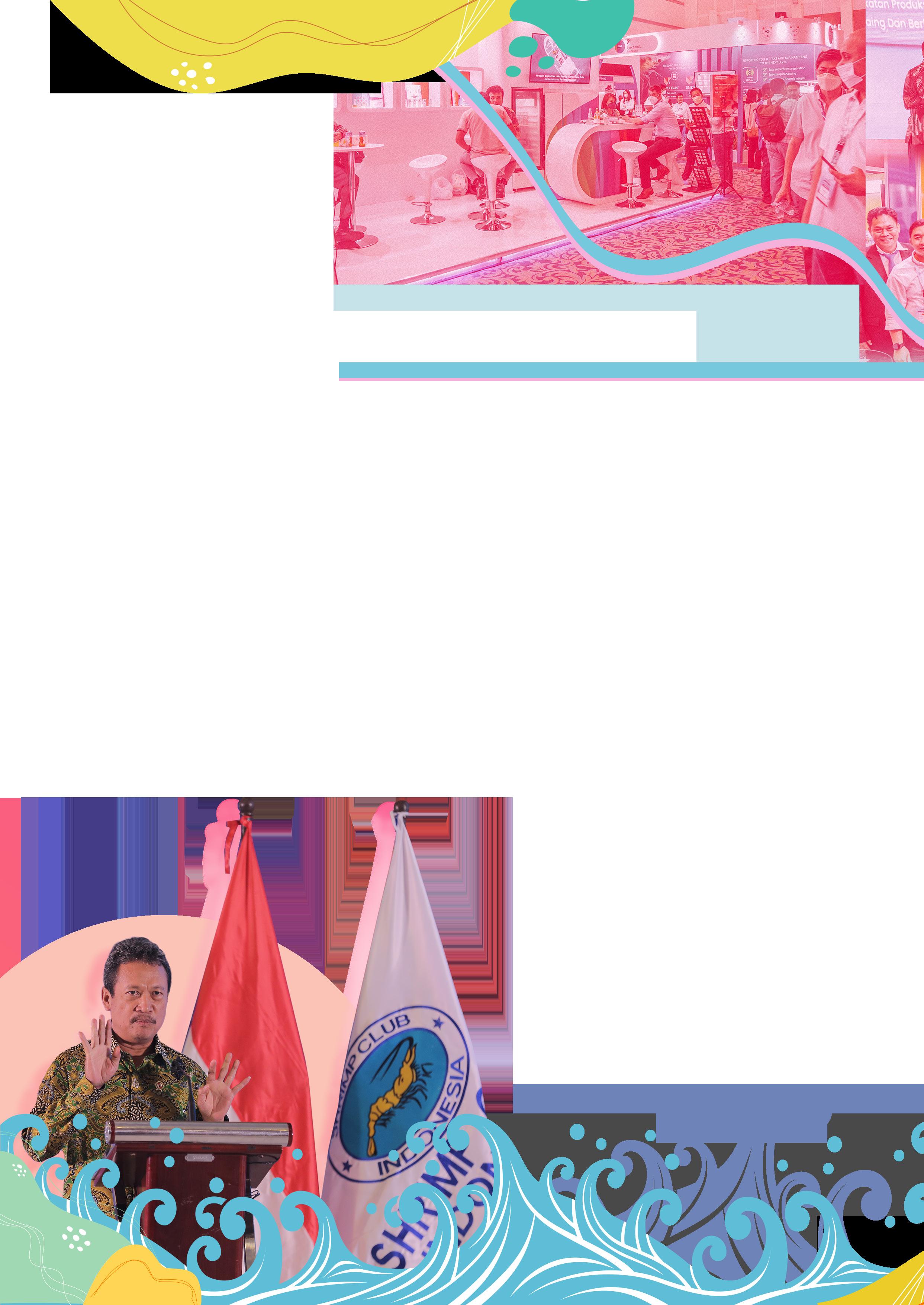
250% or 2 million tons of shrimp pro duction in 2024. Including private par ties or industry players, because the government has limitations and only acts as a regulator. “So, we are pushing as much as possible to the private sec tor. If the private sector has synergy, we direct it according to good and correct cultivation principles with the concept of the inlet, outlet areas, then complete good aquaculture practices, then this cultivation activity will be sustainable and the welfare of cultivators will in crease,” he explained.



Apart from being a rallying point for stakeholders in the industry, the 5th SCI National Conference was also held to elect a new President. In a deliberation attended by SCI regional branches from across the country, Haris Muhtadi, who is also the sole candidate, was appoint ed as the President of the Indonesian Shrimp Club for the 2022-2027 period to replace Iwan Sutanto.
Hopefully, the new cabinet will ele vate SCI’s role in the industry, so that shrimp farming in the country is more advanced, competitive, and sustainable!.
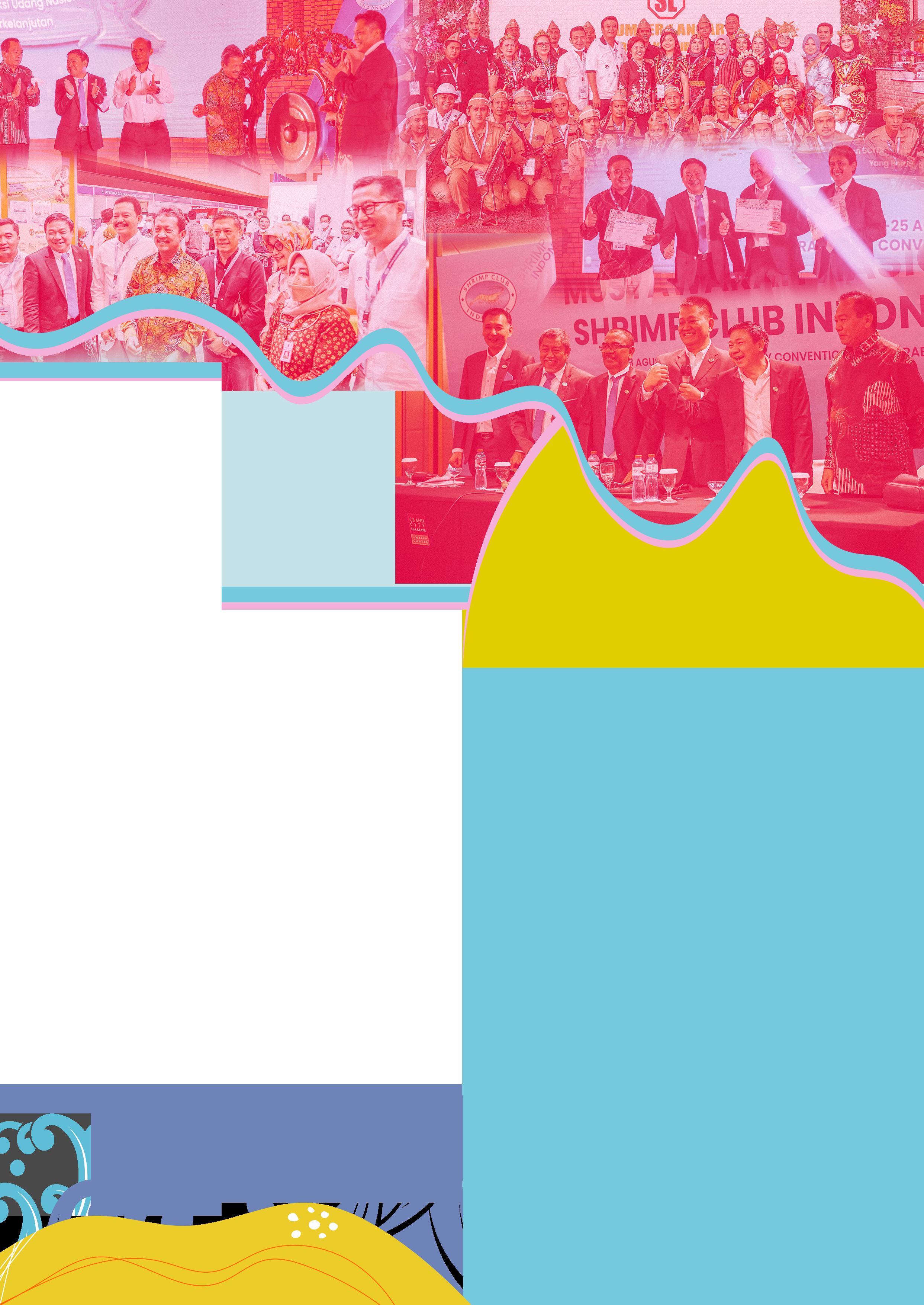

The amount of information and back ground knowledge in aquaculture can be daunting, especially for newcomers. Therefore, we decided to dedicate a page in THE CRUST to educate and share new infor mation with the reader. Some issues will cover basic information as well as new cutting-edge technologies so people from different back grounds can enjoy them. In the first couple of issues, we will explore the intricacy of design ing and constructing your ponds. We think it is a good start for anyone that wants to dive into aquaculture.
When we want to build a farm, we first have to decide what kind of farm we want to build. Whether it is an extensive/traditional farm, intensive/modern, or super intensive/high tech farm. Different designs work better in different conditions, such as land elevation or the amount of space available. Here we will explore the different models of aquaculture farms around the world. There will be some variations to the design on the field, but the main idea should be similar. Hence, we will categorize it into 3 main groups:
el in this industry. This pond model can be very cheap to build especially if you have land with enough elevation regarding the tide level. Just make sure that the land is soft enough to be excavated. In cases where the elevation is low, you will need to bring a landfill. However, this rule doesn’t apply if you are making a traditional farm, where you rely on the high tide to bring water in. Conventional ponds’ sizes can range from a couple of hundred meter square ponds, and up to hectares per pond like what we see in Ecuador.
Pros:
• Adjustable to the layout of the land

• Familiarity from being the most widely used model
Cons:
• Some dead zones are usually formed especially in the corners

Need more energy to create a vortex and gather sludge/waste
This pond model has been gaining popularity in shrimp farms recent ly. Round tanks are usually small er than conventional ponds and are constructed above ground. Because of their shape, you can minimize equipment that focuses on making currents and substitute them with equipment that is more efficient at generating dissolved oxygen. You can find a lot of these pond models, es pecially in Vietnam, where they suc cessfully industrialized round construction so that you can buy all of the pre fabricated parts and just assemble them on site.

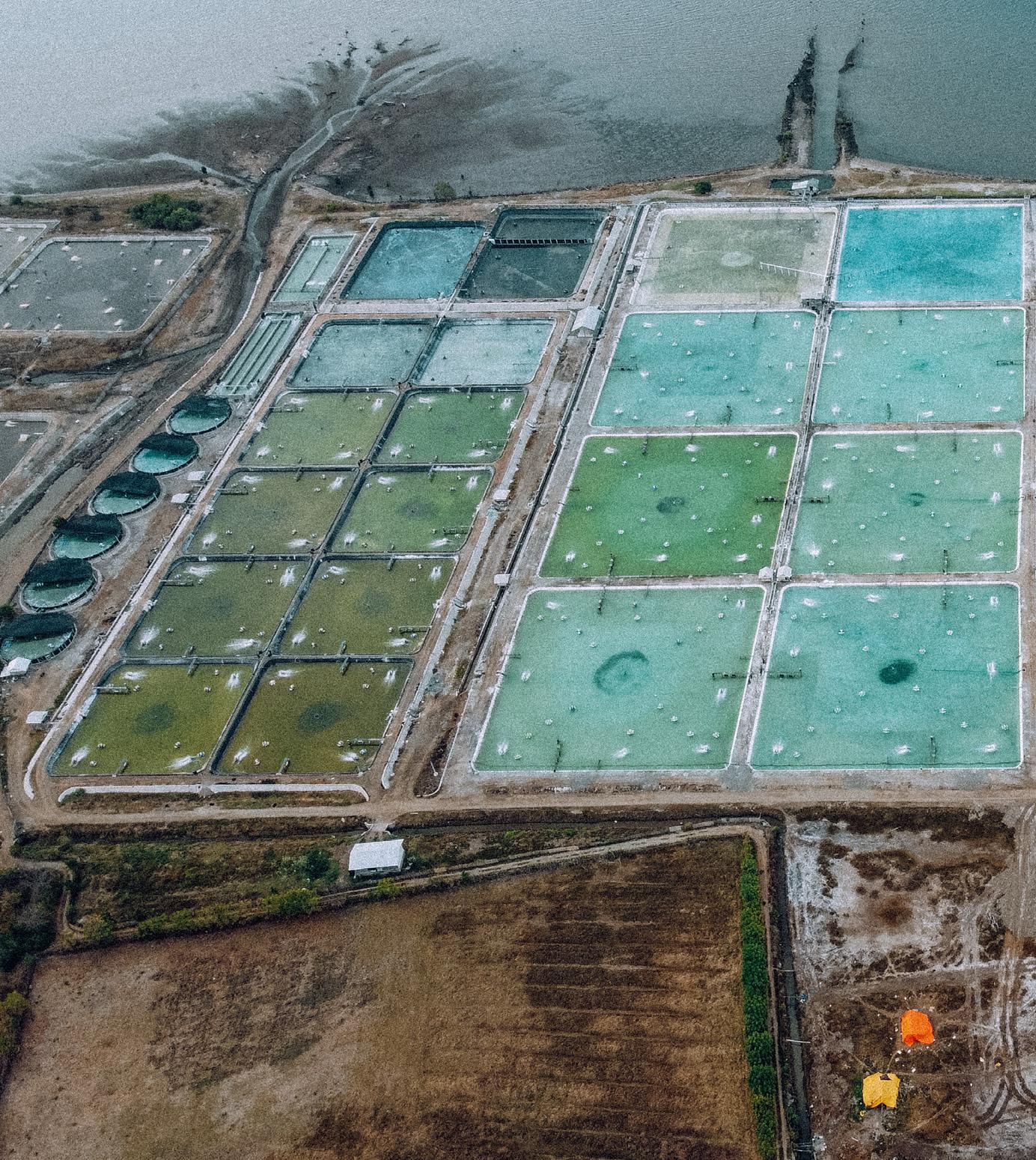

Pros:
• Most efficient design to create a vortex to gather sludge/waste
• Faster construction time
Cons:

Less efficient land use
Uneaten feed travels faster to the central drain

After several decades of using conventional rectangular and big ponds (>2.000 m2), some shrimp producers like Vietnam and Thailand started to develop a new concept in the form of circular and smaller ponds. This model was applied in a multi-phase grow-out system.
According to shrimp farming expert David Kawahigashi, the main objective of the nursery that uses circular ponds is to produce high biomass (4-6 kg/m2) in a controlled and sustainable culture

system. And this is possible to realize through the combination of small pond units, proper water treatment facili ty, efficient waste removal through the central drains, multi-phase transfers, high-performance genetics, optimal feeding management with high-quali ty feeds, synbiotic water management, and shading of the surface area to mini mize algae blooms.
In addition, the smaller ponds al low it to be combined with the latest technologies called “Smart Farming”.
Including automatic feeders, auto matic and real-time water quality checkers connected with the Inter net of Things (IoT), and alternative energy like solar panels.
In Vietnam, the circular ponds or round tanks built above the ground began approximately five years ago as part of a nursery. This new sys tem was successfully used as one of their strategies to revive AHPND
outbreaks. David says that the farmers in Viet nam who apply 2-phase usually have two sizes of nursery ponds, namely
200 and 800 m2. And very few farmers who use 3-phase have 1.400 m2 ponds.
And to gain high productivity in small ponds, adequate oxygen concentration at a minimum of 4 ppm is needed. To ensure this, farmers usually use aera tors in the form of blowers and paddle wheels at once.
Besides Vietnam and Thailand, Sri Lanka has several circular ponds and has been quite successful. However, David adds “that after Vietnam, Indo nesia is the country that has the most round tank farms in operation. Some countries in South and Central America are also starting up round tanks. More farmers will migrate to this round-tank model as diseases continue to spread. And I think India is primed to initiate the round tank model once the government permits the farmers.”
The use of a multi-phase roundtank model suppresses diseases such as EHP (Enterocytozoon Hepatopenaei).
As the condition is usually triggered by turbidity and sediment accumulation on

the pond bottom, it makes sense that the smaller circular pond is hydro-dy namically more efficient in removing sediments quickly through the central drain.
While in conventional ponds larger than 2,000 m2, the relatively long tra vel distance towards the central drain slows down the rate of sediment collect ion, making it less efficient. Particular ly in Indonesia, farmers only carry out a single-phase grow-out, exacerbating the accumulation of sediments on the bottom.
He also underlines that disease con trol in the nursery can be improved by using a net to shade the ponds. Almost all the circular pond farmers in Vietnam covered their ponds, at least half due to many reasons.
“The reason for the shading is to control the algae blooms as when the algae crashes, the accumulation of the lysed algae creates food for Vibrio bac teria. Often, Vibrio bacteria is the pre cursor to a disease outbreak such as EMS, EHP, Vibriosis, etc. Although Viet nam has more cyclones than Indonesia, the Vietnamese farmers still chose to
shade their tanks or small ponds with shade netting,” David says.
Should Indonesian farmers move to circular and nursery ponds?
As David mentioned, a circular pond is ideally combined with a nursery sys tem. It is pretty different from circular ponds that Indonesian farmers deve loped. Because in Indonesia, circular ponds are commonly carried out for single-phase growth. So the cultivation practices remain the same as in con ventional ponds.
“It seems that the farmers are ope rating their round tanks very similar to how they operate their convention al ponds, with direct stocking (single phase), green water (no shading), and dirty bottoms (less siphoning and bot tom cleaning). In Vietnam, the manage ment of the round tank farms is quite different from Indonesia,” he adds.
If Indonesian shrimp farmers are

 “David Kawahigashi ”
“David Kawahigashi ”
“correct” layout and management of this pilot-phase module. He also rec ommends visiting some circular pond farmers in Vietnam who successfully applied it.

This new system’s development will take time, as David says that “this tran sition from traditional ponds to round tanks will be a gradual but long-term movement. Over the past five years, Vietnam has quietly shifted from tradi tional ponds to the round-tank, roundpond model. I would not be surprised if over 50% of the vannamei shrimp pro duced in Vietnam comes from this new revolution.”
Applying a nursery system using cir cular ponds will increase the production cost. However, this can be compensated by harvesting big-size shrimp larger in volume. In addition, the grow-out cycle will be shorter and can be carried out more in a year. And how should we be gin this new system? See more of Da vid’s tips in our next issue!.
lTHE CRUST-AB, UTE, DENNY
interested in this system, David sug gests that they start with just a few tanks and practice the
THECRUST has had the chance to sit down and interview Mr. Haris Muhta di, a shrimp farming practitioner who just got elected as the President of Shrimp Club Indonesia (SCI) Association for the 2022-2027 period at the 5th SCI National Conference, which was held in Surabaya 23-25 August 2022.

This gentleman who is a senior in this shrimp aquaculture industry spoke to us about his priorities and programs to not just further develop SCI, but also the Indo nesian shrimp industry as a whole.
TC: Hello Mr. Haris, we want to say congratulations on your appointment as thenew president of one of the biggest aquaculture associations in Indonesia, ShrimpClub Indonesia. How do you feel?
HM: I feel like I’m coming home because SCI for me was my past organization. Even though I never officially became one of its cabinet members, I was one of the founding fathers of SCI, among other senior shrimp farmers, who built the foundation so that SCI can be known far and wide and useful to its members.
TC: So, what are your short term and longterm goals as the new President of SCI?Please elaborate.
HM: Our short term goal for SCI is to consolidate and reregister our members so that we can map our potential betterand more orderly. Next, we want to create a training programto upgrade the technical skills of our members’ farm and labtechnicians.
As for our longterm goal, we want to review the existing rulesand regulations that we think are impeding the industry’sprogress. We will lobby and negotiate with relevant stakeholders, including the government, to create a more conduciveecosystem for the national shrimp aquaculture industry.
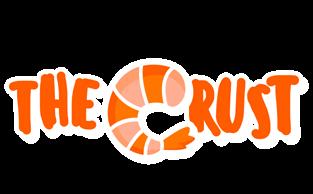
TC: How many SCI representatives are there in Indonesia right now? And where do you want to bring this association to? Since we know there are also multiple associations in the shrimp sec tor. What makes SCI different than all of them?
HM: There are 18 SCI regional branches spreadacross Indonesia.
Of course, SCI needs to be able to become a facilitator for the farmers so they can increase their productivity and profit. Our main point is to enable ourmembers to be more prosperous. If the membersare happy, they will gladly support SCI’s programs.We will partner with other associations in this sectorsuch as AP5I (packer), FKPUI (hatchery), and GPMT(feed mill) to advance the national shrimp farmingindustry.
TC: What is the role of SCI in supporting the government program of increasing the na tional shrimp production to 2 million tons by the end of 2024?
HM: There are some prerequisites to attainthe production target of 2 million tons. Thistarget can be achieved as long as:
• Easier permits for both existing farmersand new investments.
• Availability of good brood stocks andsupporting infrastructure.
• Accessibility to lab services to preventdisease outbreaks near production centers.
• Tax or other financial incentives.
TC: Additionally, there’s a need to increase the competitiveness of Indonesia’s shrimp regard ing other exporting countries. Do you think our shrimp sector is ready?
HM: Our national shrimp industry is essentially ready.And right now, our ongoing effort is to promote certification, sustainability, branding, and more focusedmarketing besides efficiency. Because if our shrimpis more expensive than the competitors, then it will bedifficult to dominate the international market.
TC: Before becoming the president of SCI, you(Mr. Haris) have been in this industry for a longtime. What do you think are the unsolved challenges the farmers are facing now at home?
HM: Challenges in shrimp farming that we have been, and still facing right now are:
• Diseases outbreaks that are caused by viruses and bac teria
• Our farm technician’s skills in interpreting field data
• Availability of SPF seeds that are spread across Indo nesia
• And the overlapping of regulations between the central and regional government

TC: What do you think the support from the government should look like in this industry? Is it currently adequate?
TC: What is the percentage of the total national shrimp production that is being exported right now? Is there any potential within the local mar ket?
HM: 85% of the national shrimp production is exported.The local market potential is big, though hasn’t beendone optimally. One of SCI’s main campaigns is to increase our domestic consumption of shrimp.
HM: Government support can and should be prioritized in these parts:
HM: Government support can and should be prioritized in these parts:
• Easier permits
• Easier permits
• Financial and tax incentive
• Financial and tax incentive
• Increase the number of labs
• Increase the number of labs
• Support in research and development that is more oriented to increase in production
• Support in research and development that is more oriented to increase in production
TC: As you saw, right now there are a lot of youngpeople interested in shrimp farming. How doesSCI see this, and what is your suggestion to thisyounger generation?
HM: Certainly, the young generation that holds this interest are well educated, have international insights, are inno vative, and are more attuned to new technologies. So, the young generation is truly the hope of the Indonesia shrimp industry’s advancement.
TC: What are SCI’s expectations for the national shrimp industry?
HM: Indonesia’s shrimp industry must be competitive in theinternational market, efficient, and sustainable.

to Cook:

the back of the shrimp and clean it (EZ-Peel)
the shrimps in flour and deep fry them
golden and crispy, then set them aside
red onion, lemongrass,
pan

Rasa”

with
sauce
to taste,


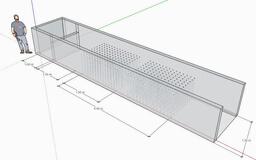

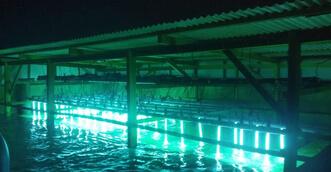
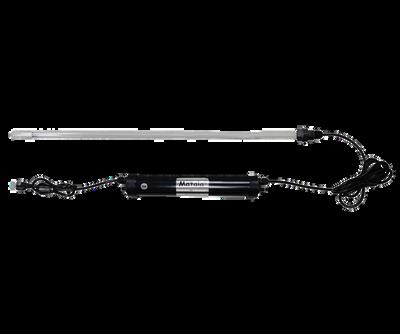





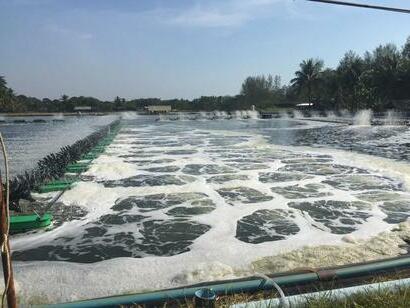
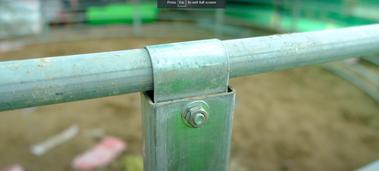







Blower

"Round Tank can reduce production costs while increasing biosecurity and sustainability in future shrimp farming."
